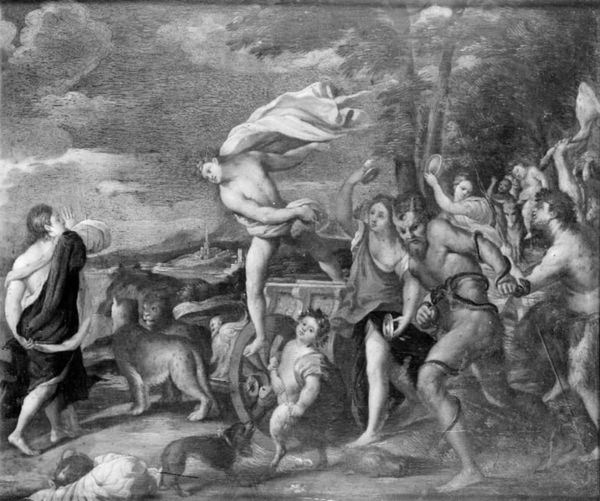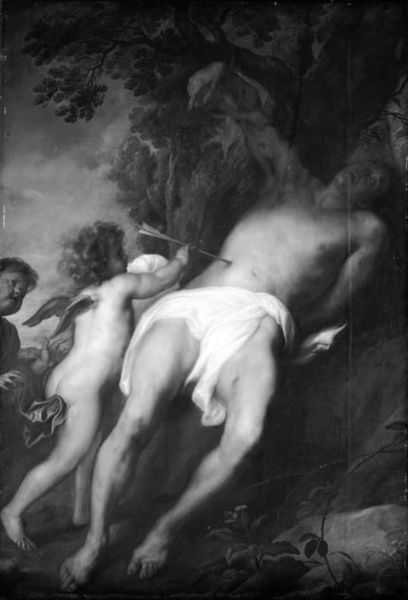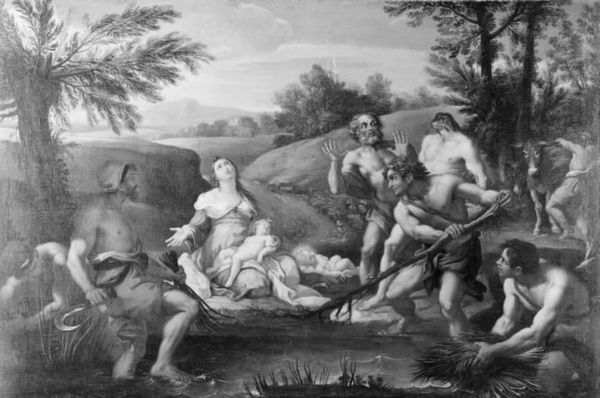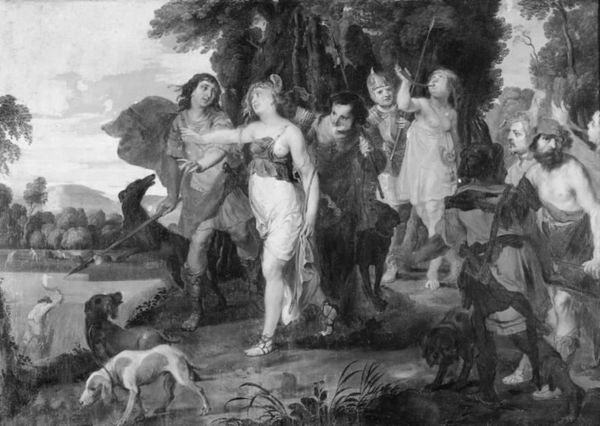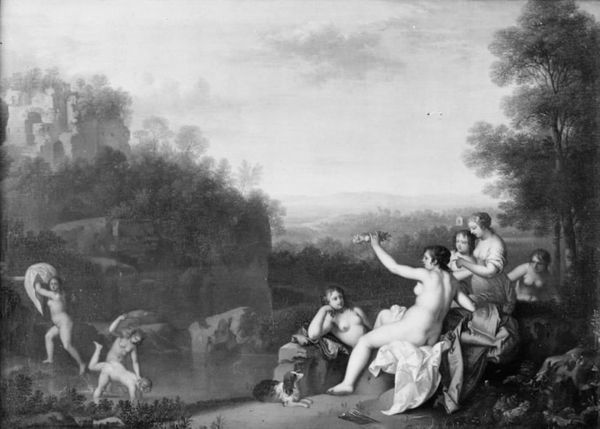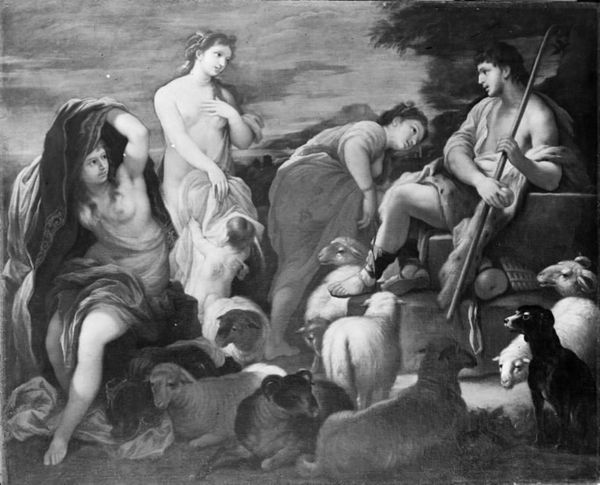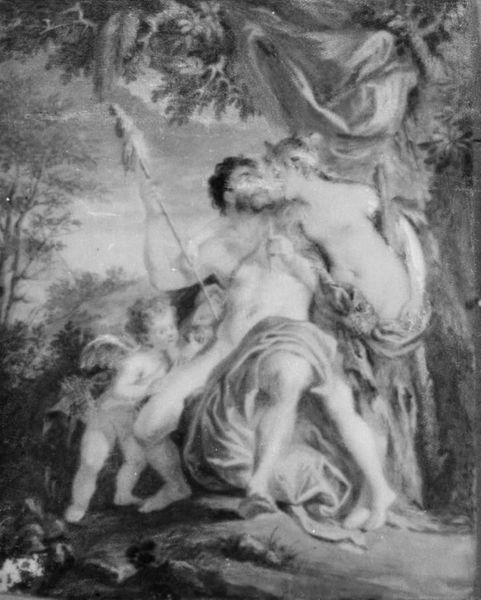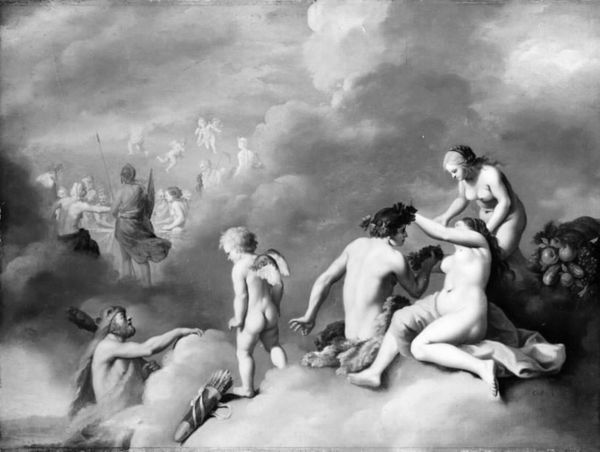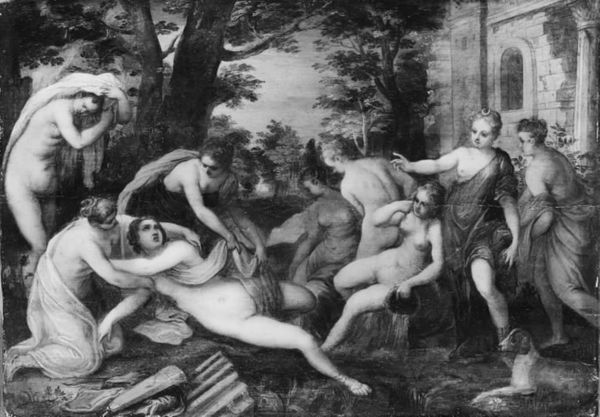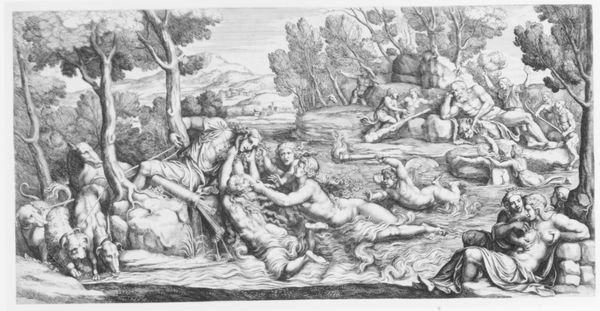
painting
#
baroque
#
painting
#
landscape
#
figuration
#
black and white
#
monochrome photography
#
history-painting
#
monochrome
#
nude
#
monochrome
Dimensions: 26.2 cm (height) x 34 cm (width) (Netto)
Curator: The Statens Museum for Kunst holds this oil on canvas depicting a tragic mythological scene. Cornelis van Poelenburch likely worked on "Adonis Slain" sometime between 1609 and 1667. The monochrome rendering strikes me immediately. Editor: It has this ghostly quality, doesn't it? Like a faded memory, rendered in grayscale. There’s a definite emphasis on the body – the textures of skin contrasted with the dramatic sweep of fabric. I wonder about the labor that went into achieving that effect, carefully building up layers to evoke volume. Curator: Yes, it seems Poelenburch really wants to showcase idealized forms. Adonis lies in the foreground, lifeless, while Venus rushes in, accompanied by Cupid. This image pulls from the symbolic vocabulary of love and loss. Adonis represents beauty and fleeting life, while Venus embodies desire and grief. The dogs at the right of Adonis feel allegorical of something to do with fidelity, of loyalty after beauty has faded. Editor: The setting, though—is that a contemporary villa in the background? Juxtaposing this ancient tragedy with a signifier of wealth, I’d want to look into the commissioning context. Was the patron attempting to align themselves with classical virtues, perhaps even as a justification for wealth and privilege, maybe even ownership of the landscape or fields? The physical production of paintings and how they speak to socio-economic dynamics is always worth excavating. Curator: Absolutely. And think about Cupid's presence. He's there as an embodiment of love’s capriciousness. Love causes joy but can just as easily inflict pain, represented by Adonis's death by a wild boar. Editor: I’d be very curious about any underdrawings or pentimenti revealed by infrared reflectography, the kinds of details that could reveal changes in composition or technique—labor processes otherwise obscured to viewers. Those material traces offer important perspectives. Curator: A fair point. By looking at mythological scenes, like "Adonis Slain", we can appreciate how Poelenburch captured a specific moment. I hope our visitors take from this piece an interest in the way the themes have remained with us for centuries. Editor: I'd hope that people see these Baroque-era canvases as deeply interwoven with their means of production and dissemination within society, the act of producing, displaying, and consuming art as material operations worthy of attention, just as much as iconography.
Comments
No comments
Be the first to comment and join the conversation on the ultimate creative platform.
